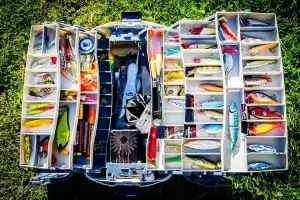Fishing is among the world’s most popular pastimes, and it’s difficult to find someone that has never enjoyed the quiet solitude of spending a day out on the dam or lake.
For some, fishing is only done once every now and again, while others try to enjoy it as much as they possibly can, often leading to them taking it on as a long-term hobby. For those that want to try and start building a complete set of fishing gear, this is what’s needed.
Rod and Reel
The rod and reel are the two most important tools for any fisherman, and they both come in different shapes and sizes. For most types of fishing, a spinning reel and rod combination is often the best way to go, which equates to a medium action rod and between a 1000 and a 3000 sized reel. This is the most basic setup for almost all freshwater fish, but it can just as easily be used for inshore saltwater fishing, which can include trout, tarpon, bass, and red drum. Most of this equipment can be found at local fishing ships, and tend to be fairly inexpensive. Alternatively, it might be a good idea to look for these items second hand, but just make sure that they are in good shape, as mistreated reels don’t tend to last long.
When you first begin fishing learning the basics of gear and tackle may be challenging, but will become easier with time.
Fishing Line
In terms of the types of fishing lines needed, there are two main kinds: monofilament and braided line. Monofilament is probably the better option for beginners, as it’s relatively cheap, and its durability makes it perfect, allowing the fisherman to relax on their chair enjoying time at https://onlinebettingnz.co.nz/ while they wait for a fish. On top of this, a fluorocarbon leader is also a good idea, which is almost completely invisible to fish when its in the water, and its resistant to abrasion, making it good for inland, shallow dams that have lots of rocks or other debris.

Hooks
Cheap hooks should always be avoided as much as possible as a set of quality hooks are worth putting money into. The size of the hook is very much dependent on the type of fish that the fisherman wants to catch, and each kind of hook comes with its own set of pros and cons. A regular circle hook will work best for most types of live bait and can be used in most bodies of water. Split shot sinkers will also make an important addition to any tackle box and consist of small weights that help the bait sink down even in strong currents, and allows for longer casts.
Adding a bobber to this helps keep track of where the line is, and also gives the bait on the hook a more natural appearance to the fish. Bobbers also provide a great way for the fisherman to see if any bites have taken place, as the fish will pull the entire bobber below the surface.



